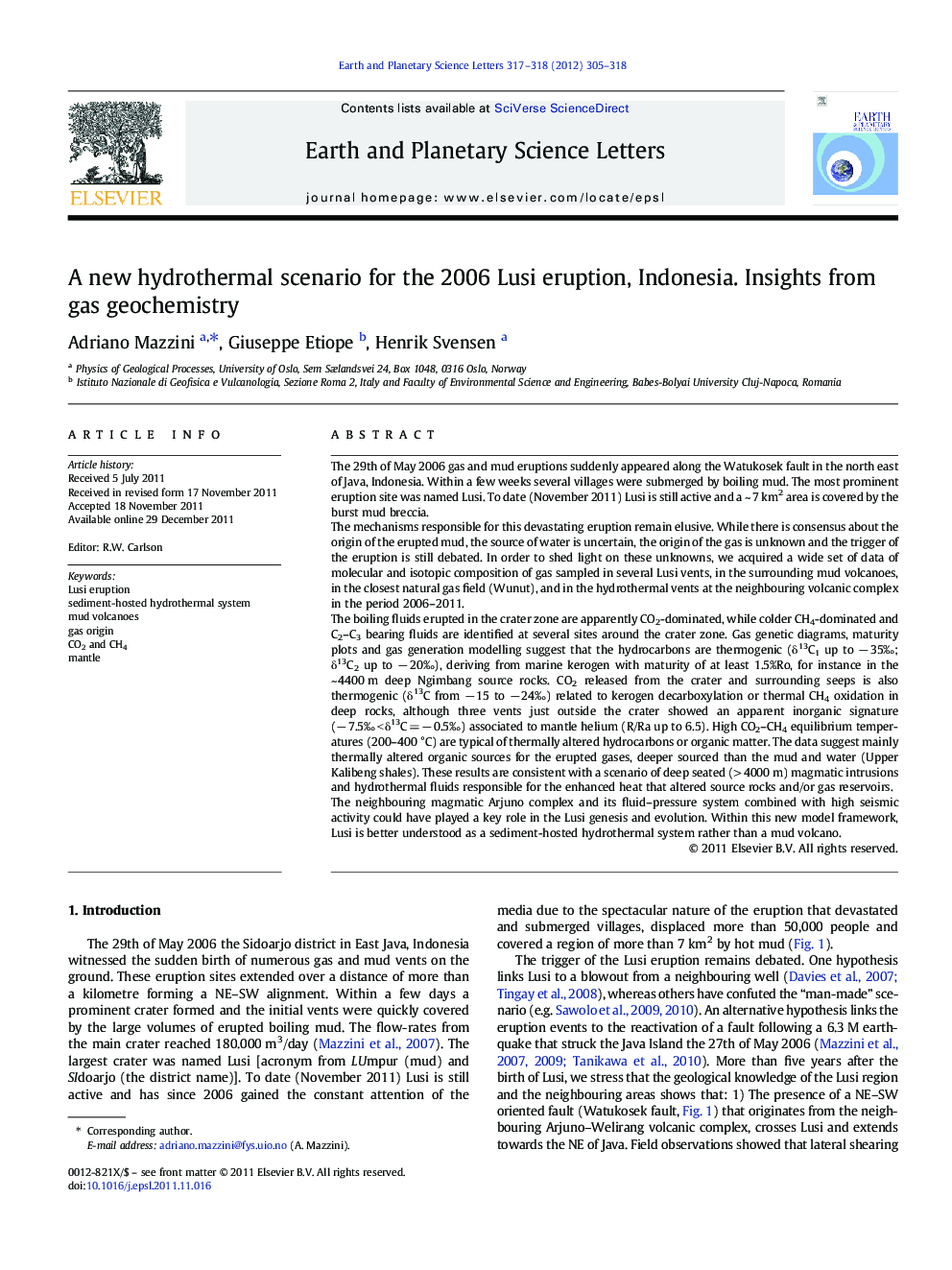| کد مقاله | کد نشریه | سال انتشار | مقاله انگلیسی | نسخه تمام متن |
|---|---|---|---|---|
| 4677647 | 1634812 | 2012 | 14 صفحه PDF | دانلود رایگان |

The 29th of May 2006 gas and mud eruptions suddenly appeared along the Watukosek fault in the north east of Java, Indonesia. Within a few weeks several villages were submerged by boiling mud. The most prominent eruption site was named Lusi. To date (November 2011) Lusi is still active and a ~ 7 km2 area is covered by the burst mud breccia.The mechanisms responsible for this devastating eruption remain elusive. While there is consensus about the origin of the erupted mud, the source of water is uncertain, the origin of the gas is unknown and the trigger of the eruption is still debated. In order to shed light on these unknowns, we acquired a wide set of data of molecular and isotopic composition of gas sampled in several Lusi vents, in the surrounding mud volcanoes, in the closest natural gas field (Wunut), and in the hydrothermal vents at the neighbouring volcanic complex in the period 2006–2011.The boiling fluids erupted in the crater zone are apparently CO2-dominated, while colder CH4-dominated and C2–C3 bearing fluids are identified at several sites around the crater zone. Gas genetic diagrams, maturity plots and gas generation modelling suggest that the hydrocarbons are thermogenic (δ13C1 up to − 35‰; δ13C2 up to − 20‰), deriving from marine kerogen with maturity of at least 1.5%Ro, for instance in the ~ 4400 m deep Ngimbang source rocks. CO2 released from the crater and surrounding seeps is also thermogenic (δ13C from − 15 to − 24‰) related to kerogen decarboxylation or thermal CH4 oxidation in deep rocks, although three vents just outside the crater showed an apparent inorganic signature (− 7.5‰ < δ13C = − 0.5‰) associated to mantle helium (R/Ra up to 6.5). High CO2–CH4 equilibrium temperatures (200–400 °C) are typical of thermally altered hydrocarbons or organic matter. The data suggest mainly thermally altered organic sources for the erupted gases, deeper sourced than the mud and water (Upper Kalibeng shales). These results are consistent with a scenario of deep seated (> 4000 m) magmatic intrusions and hydrothermal fluids responsible for the enhanced heat that altered source rocks and/or gas reservoirs.The neighbouring magmatic Arjuno complex and its fluid–pressure system combined with high seismic activity could have played a key role in the Lusi genesis and evolution. Within this new model framework, Lusi is better understood as a sediment-hosted hydrothermal system rather than a mud volcano.
► Gas from Lusi eruption shows that CO2 and CH4 have a deep thermogenic origin.
► Thermally altered Ngimbang source rocks (> 4400 m depth) could generate the erupted gas.
► Lusi hydrocarbons derive from the Ngimbang–Kujung petroleum system.
► Mantle He from Lusi suggests deep magmatic intrusions from Arjuno–Welirang volcano.
► Lusi is not a mud volcano but rather a sediment-hosted hydrothermal system.
Journal: Earth and Planetary Science Letters - Volumes 317–318, 1 February 2012, Pages 305–318